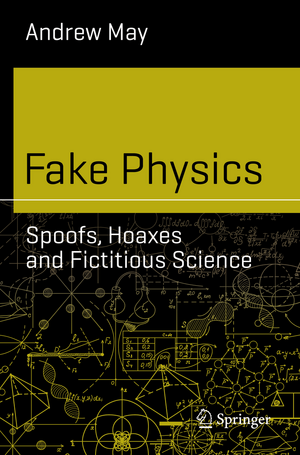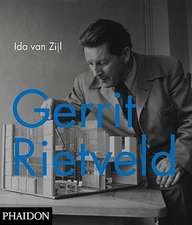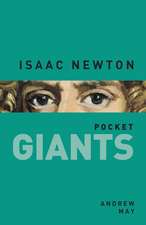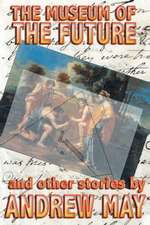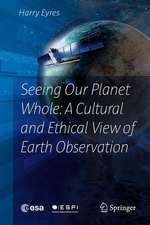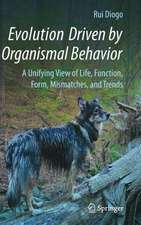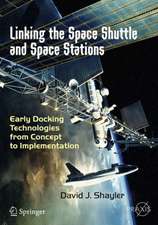Fake Physics: Spoofs, Hoaxes and Fictitious Science: Science and Fiction
Autor Andrew Mayen Limba Engleză Paperback – 26 apr 2019
The boundaries between fact and fiction can also be blurred by physicists themselves - sometimes unintentionally, sometimes with tongue-in-cheek, sometimes to satirize perceived weaknesses in research practices. Examples range from hoaxes aimed at exposing poor editorial standards in academic publications, through “thought experiments” that sound like the plot of a sci-fi movie to April Fools’ jokes. Even the latter may carry a serious message, whether about the sociology of science or poking fun at legitimate but far-out scientific hypotheses.
This entertaining book is a joyous romp exploring the whole spectrum of fake physics – from science to fiction and back again.
Din seria Science and Fiction
-
 Preț: 129.05 lei
Preț: 129.05 lei -
 Preț: 104.10 lei
Preț: 104.10 lei -
 Preț: 103.05 lei
Preț: 103.05 lei -
 Preț: 104.92 lei
Preț: 104.92 lei - 5%
 Preț: 102.99 lei
Preț: 102.99 lei -
 Preț: 105.96 lei
Preț: 105.96 lei -
 Preț: 215.30 lei
Preț: 215.30 lei -
 Preț: 162.50 lei
Preț: 162.50 lei -
 Preț: 146.18 lei
Preț: 146.18 lei - 5%
 Preț: 218.95 lei
Preț: 218.95 lei -
 Preț: 128.64 lei
Preț: 128.64 lei -
 Preț: 150.92 lei
Preț: 150.92 lei -
 Preț: 115.46 lei
Preț: 115.46 lei -
 Preț: 111.50 lei
Preț: 111.50 lei -
 Preț: 101.01 lei
Preț: 101.01 lei -
 Preț: 103.91 lei
Preț: 103.91 lei -
 Preț: 337.51 lei
Preț: 337.51 lei -
 Preț: 131.12 lei
Preț: 131.12 lei -
 Preț: 141.41 lei
Preț: 141.41 lei -
 Preț: 484.79 lei
Preț: 484.79 lei -
 Preț: 182.09 lei
Preț: 182.09 lei -
 Preț: 106.14 lei
Preț: 106.14 lei -
 Preț: 147.23 lei
Preț: 147.23 lei -
 Preț: 183.84 lei
Preț: 183.84 lei -
 Preț: 109.86 lei
Preț: 109.86 lei -
 Preț: 207.39 lei
Preț: 207.39 lei -
 Preț: 72.68 lei
Preț: 72.68 lei -
 Preț: 148.46 lei
Preț: 148.46 lei -
 Preț: 154.46 lei
Preț: 154.46 lei -
 Preț: 146.58 lei
Preț: 146.58 lei -
 Preț: 184.72 lei
Preț: 184.72 lei -
 Preț: 149.48 lei
Preț: 149.48 lei -
 Preț: 133.99 lei
Preț: 133.99 lei -
 Preț: 149.45 lei
Preț: 149.45 lei -
 Preț: 128.86 lei
Preț: 128.86 lei -
 Preț: 146.36 lei
Preț: 146.36 lei -
 Preț: 152.76 lei
Preț: 152.76 lei - 20%
 Preț: 225.94 lei
Preț: 225.94 lei -
 Preț: 214.22 lei
Preț: 214.22 lei -
 Preț: 190.49 lei
Preț: 190.49 lei -
 Preț: 168.11 lei
Preț: 168.11 lei -
 Preț: 174.83 lei
Preț: 174.83 lei -
 Preț: 111.33 lei
Preț: 111.33 lei -
 Preț: 183.23 lei
Preț: 183.23 lei -
 Preț: 147.28 lei
Preț: 147.28 lei -
 Preț: 173.75 lei
Preț: 173.75 lei
Preț: 179.68 lei
Nou
Puncte Express: 270
Preț estimativ în valută:
34.39€ • 35.52$ • 28.62£
34.39€ • 35.52$ • 28.62£
Carte disponibilă
Livrare economică 04-18 martie
Preluare comenzi: 021 569.72.76
Specificații
ISBN-13: 9783030133139
ISBN-10: 3030133133
Pagini: 230
Ilustrații: X, 170 p. 33 illus., 21 illus. in color.
Dimensiuni: 155 x 235 mm
Greutate: 0.26 kg
Ediția:1st ed. 2019
Editura: Springer International Publishing
Colecția Springer
Seria Science and Fiction
Locul publicării:Cham, Switzerland
ISBN-10: 3030133133
Pagini: 230
Ilustrații: X, 170 p. 33 illus., 21 illus. in color.
Dimensiuni: 155 x 235 mm
Greutate: 0.26 kg
Ediția:1st ed. 2019
Editura: Springer International Publishing
Colecția Springer
Seria Science and Fiction
Locul publicării:Cham, Switzerland
Cuprins
Introduction.- Science Fiction Posing as Science Fact.- The Relativity of Wrong.- The Art of Technobabble.- Spoofs in Science Journals.- April Fool.- Making a Point.- Thinking Outside the Box.- Appendix: Science for Crackpots.
Notă biografică
Andrew May obtained a PhD in astrophysics from the University of Manchester in 1982 and is an experienced and versatile professional, with a career spanning academia, government and private industry. Since the start of 2011 he has been working as a freelance writer and defence consultant. He has a wide range of interests and has written both authoritatively and entertainingly on the physical sciences, military technology, British history, science fiction, New Age beliefs and the paranormal.
He has recently published Pseudoscience and Science Fiction (2017), The Telescopic Tourist's Guide to the Moon (2017) and Rockets and Ray Guns: The Sci-Fi Science of the Cold War (2018) with Springer.
He has recently published Pseudoscience and Science Fiction (2017), The Telescopic Tourist's Guide to the Moon (2017) and Rockets and Ray Guns: The Sci-Fi Science of the Cold War (2018) with Springer.
Textul de pe ultima copertă
People are used to seeing “fake physics” in science fiction – concepts like faster-than-light travel, antigravity and time travel to name a few. The fiction label ought to be a giveaway, but some SF writers – especially those with a background in professional science – are so adept at “technobabble” that it can be difficult to work out what is fake and what is real. To confuse matters further, Isaac Asimov’s 1948 piece about the fictitious time-travelling substance thiotimoline was written, not as a short story, but in the form of a spoof research paper.
The boundaries between fact and fiction can also be blurred by physicists themselves - sometimes unintentionally, sometimes with tongue-in-cheek, sometimes to satirize perceived weaknesses in research practices. Examples range from hoaxes aimed at exposing poor editorial standards in academic publications, through “thought experiments” that sound like the plot of a sci-fi movie to April Fools’ jokes. Even the latter may carry a serious message, whether about the sociology of science or poking fun at legitimate but far-out scientific hypotheses.
This entertaining book is a joyous romp exploring the whole spectrum of fake physics – from science to fiction and back again.
The boundaries between fact and fiction can also be blurred by physicists themselves - sometimes unintentionally, sometimes with tongue-in-cheek, sometimes to satirize perceived weaknesses in research practices. Examples range from hoaxes aimed at exposing poor editorial standards in academic publications, through “thought experiments” that sound like the plot of a sci-fi movie to April Fools’ jokes. Even the latter may carry a serious message, whether about the sociology of science or poking fun at legitimate but far-out scientific hypotheses.
This entertaining book is a joyous romp exploring the whole spectrum of fake physics – from science to fiction and back again.
Caracteristici
Provides an entertaining and non-technical overview on (non-malicious) spoofs and hoaxes by professional physicists Introduces the scientific methods to the layperson and provides guidance for distinguishing between science and fiction Connects the science topics to Science Fiction themes and pseudoscience
